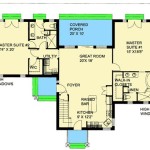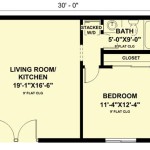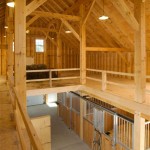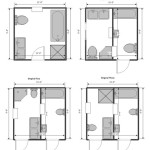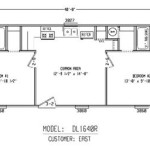Single Family Dwelling Floor Plan
A single-family dwelling floor plan is a visual representation of a home's interior layout and dimensions. It serves as a blueprint for understanding the spatial arrangement of rooms, hallways, and other features within the house. Floor plans are essential for planning construction, renovations, and interior design.
Benefits of Floor Plans
- Visualization: Floor plans provide a clear understanding of the home's layout.
- Space Planning: They help determine the optimal placement of furniture, appliances, and fixtures.
- Construction Guide: Floor plans guide contractors during construction, ensuring accuracy and efficiency.
- Renovation Planning: They provide a reference point for planning home additions or alterations.
- Marketing Tool: Floor plans can enhance property listings and attract potential buyers.
Types of Floor Plans
There are various types of floor plans, each serving a specific purpose:- Architectural Floor Plan: Shows the detailed layout, dimensions, and construction specifications of the home.
- Blueprint Floor Plan: A technical drawing used in construction, providing detailed construction instructions.
- As-Built Floor Plan: Reflects the actual construction of the home, including any changes or deviations from the original plan.
- Marketing Floor Plan: Simplified and visually appealing floor plan used for marketing purposes.
- Universal Floor Plan: Designed for accessibility, considering the needs of individuals with disabilities.
Key Elements of a Floor Plan
A typical single-family dwelling floor plan includes the following key elements:- Rooms: Outlined by walls, representing the functional spaces within the home (e.g., bedrooms, bathrooms, kitchen, living room).
- Dimensions: Indicate the size and shape of each room, including wall lengths and ceiling height.
- Windows and Doors: Shown as openings in walls, indicating their location, size, and swing direction.
- Stairs: Indicated by symbols or line drawings, representing the vertical circulation between floors.
- Appliances and Fixtures: May be included to provide an indication of the home's equipment (e.g., stove, refrigerator, bathroom fixtures).
- Construction Materials: Sometimes annotated to specify the type of materials used for walls, floors, and ceilings.
Interpreting Floor Plans
Understanding floor plans requires some basic skills:- Reading Scale: The scale indicates the ratio between the drawing and the actual size of the home.
- Line Types: Different line types represent different building elements (e.g., solid lines for walls, dashed lines for doors).
- Symbols: Standard symbols are used to represent appliances, fixtures, and other features.
- Orientation: The floor plan should have an orientation mark to indicate the direction of the house.
Conclusion
Single-family dwelling floor plans are essential tools for planning, construction, and interior design. They provide a visual representation of the home's layout, dimensions, and key elements. Understanding how to interpret floor plans allows individuals to make informed decisions about their home environment and maximize its potential.
Floor Plan Of A Typical Single Family Detached House Scientific Diagram

Design Ideas For Cost Efficient Single Family Detached Homes Probuilder

Floor Plans For The Single Family Two Y Housing Prototype Scientific Diagram

Type 2 Typical Ground Floor Plan Of A Single Y Family Housing Scientific Diagram

Design Ideas For Cost Efficient Single Family Detached Homes Probuilder

Brand New Custom Designed Single Family Home L House Floor Plan

Floor Plan Of The Typical Dwelling Unit Studied Scientific Diagram

Single Family Small House Plans Floor Photos

Single Family Small House Plans Floor Photos

Floor Plan The Madison Apartment House Single Family Detached Home Angle Text Rectangle Png Pngwing

